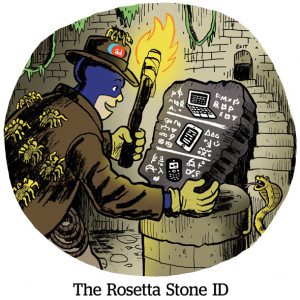Here’s today’s AdExchanger.com news round-up… Want it by email? Sign up here.
Going Dark
If you noticed your Instagram feed flooded with black squares, it was because of Blackout Tuesday, a collective protest against racism and police brutality. Started by the music industry, major retailers and brands such as Nordstrom and Madewell soon got involved, reports Business Insider. But should brands try to contribute to this movement? As The Drum reports, brands risk being seen as shallow or opportunistic, as happened with L’Oréal. This is less of an issue for advertisers with a history of allyship with the black community, such as Ben & Jerry’s and American Express, according to Sabrina Clarke-Okwubanego, co-founder of Niche On Demand. “Simply put, they have a relationship with the black community. Their activist voice contributes to real change because they have acknowledged there is a problem, called it by its name openly and accept the costs.” But marketing strategy aside, should brands have posted a black square to their Instagram feed – or would it have been more helpful to post nothing at all and let individual voices take over for a day?
The Shamrock Shake
Adweek changed hands on Tuesday, when Beringer Capital announced it had sold the publishing and events business to Shamrock Capital for an undisclosed sum. Adweek has had at least 10 owners, counting Shamrock, in its 41 years, MediaPost reports. It would be a very different matter with, say, Ad Age, which has been owned by the family-controlled Crain Communications for its entire 90-year history. Shamrock owns media and ad tech businesses, including Ad Results Media, a podcast and radio ad network, OOH media company Branded Cities and the mobile game and app studio Maple Media. “Shamrock’s portfolio of holdings and expertise in the media space makes them an ideal partner for our next phase of growth,” said Adweek CEO Jeffrey Litvack.
There’s No ‘We’ In CTV
In an ideal world, advertisers could buy all of their CTV campaigns through a single DSP. In realty, however, that’s becoming less and less feasible, as major inventory suppliers take a walled garden approach. Amazon and Roku, the two largest CTV players, now have their own DSPs. On top of that, the programmatic-TV hybrid Xandr, formerly AppNexus, was folded into AT&T’s WarnerMedia unit in April, distancing it further from the open ecosystem. Google also has a strong CTV pitch with its YouTube app supply and SSP accounts such as Disney and CBS. And since advertisers can’t choose one DSP, there’s a need for independent options, for example, The Trade Desk, Digiday reports.
Streaming Frenzy
Brands may have paused or pulled back advertising overall, but many are still pushing forward on connected TV. Programmatic ad transactions against CTV inventory rose 40% in early May after falling 14% in March, according to Pixalate. Vizio saw the largest increase in transactions from early April to early May at 108%, followed by Amazon Fire at 74% and Roku at 44%, Adweek reports. Auto brands and other verticals that initially paused spending during the pandemic have inched their way back, though travel is still dark, said Mike O’Donnell, SVP of Vizio’s platform business. As advertisers hesitate on their upfront commitments, CTV could be a more flexible alternative.
But Wait, There’s More!
- TikTok Learns From The Record Industry With Its Approach To Talent – Digiday
- Dust In The Light – Stratechery
- Luna Labs’ Replay Automates Creation Of Mobile Game Video Ads – VentureBeat
- AMC Networks, Weather Channel Join OpenAP – release
- WaPo Adds McClatchy Local News Sites To Zeus Supply Network – Axios
- Zuckerberg Defends Hands-Off Approach To Trump’s Posts – NYT
- Digital Tax Planned To Hit Google And Netflix In Kenya – Bloomberg
- Experian: Consumer Sentiment During The Pandemic – release
- Microsoft Takes On Zoom And Slack In A Battle For Your Work Computer – WSJ
You’re Hired!
- AdsWizz Adds Anne Frisbie As SVP Of Global Supply – release
- Viamedia Names John Piccone President OFF QTT Business – release
- Callie Schweitzer Joins LinkedIn As First Marketing Editor – post
- OMD’s Geraci Joins Ad Tech Company Adcuratio Media – MediaPost













